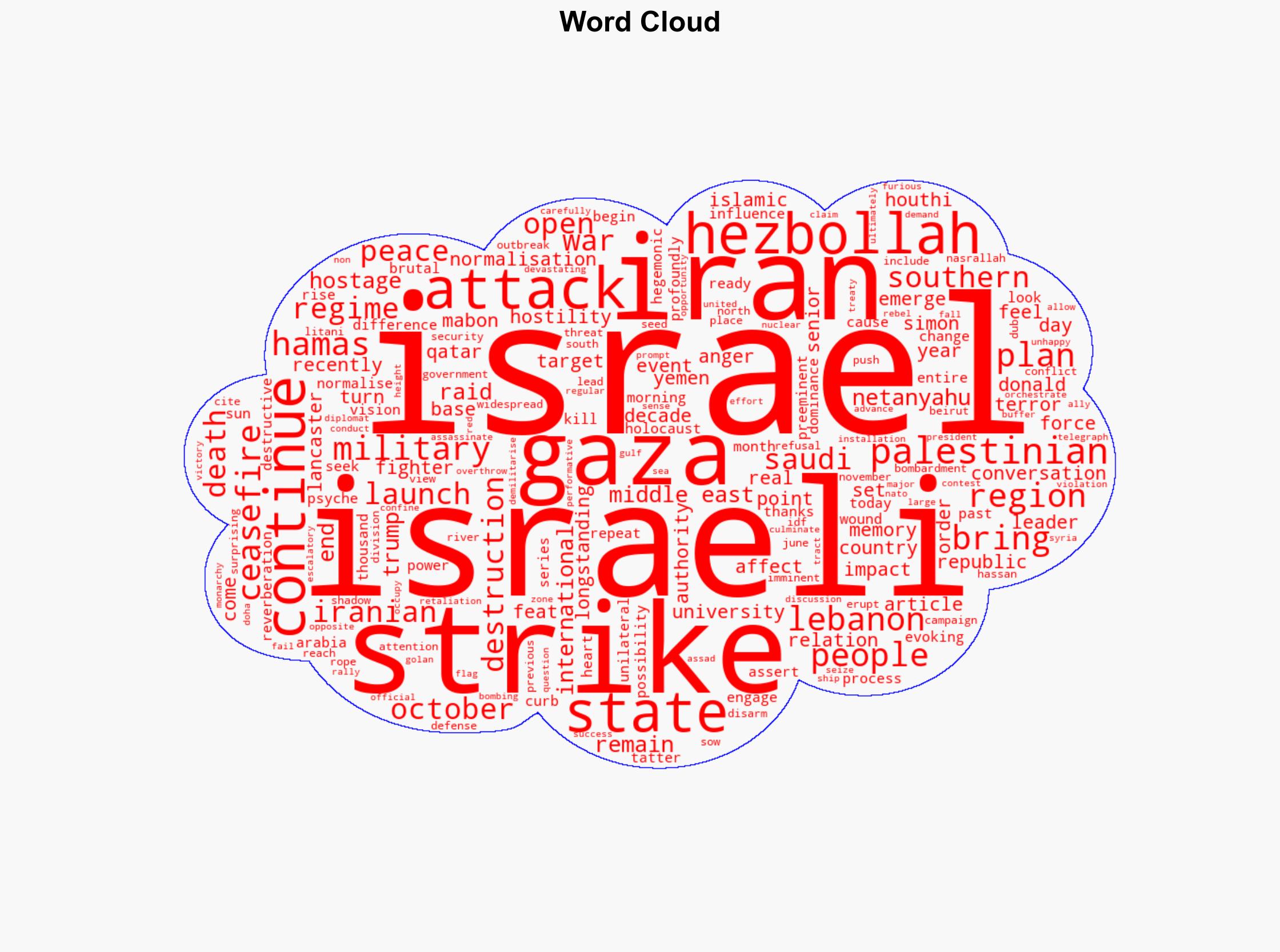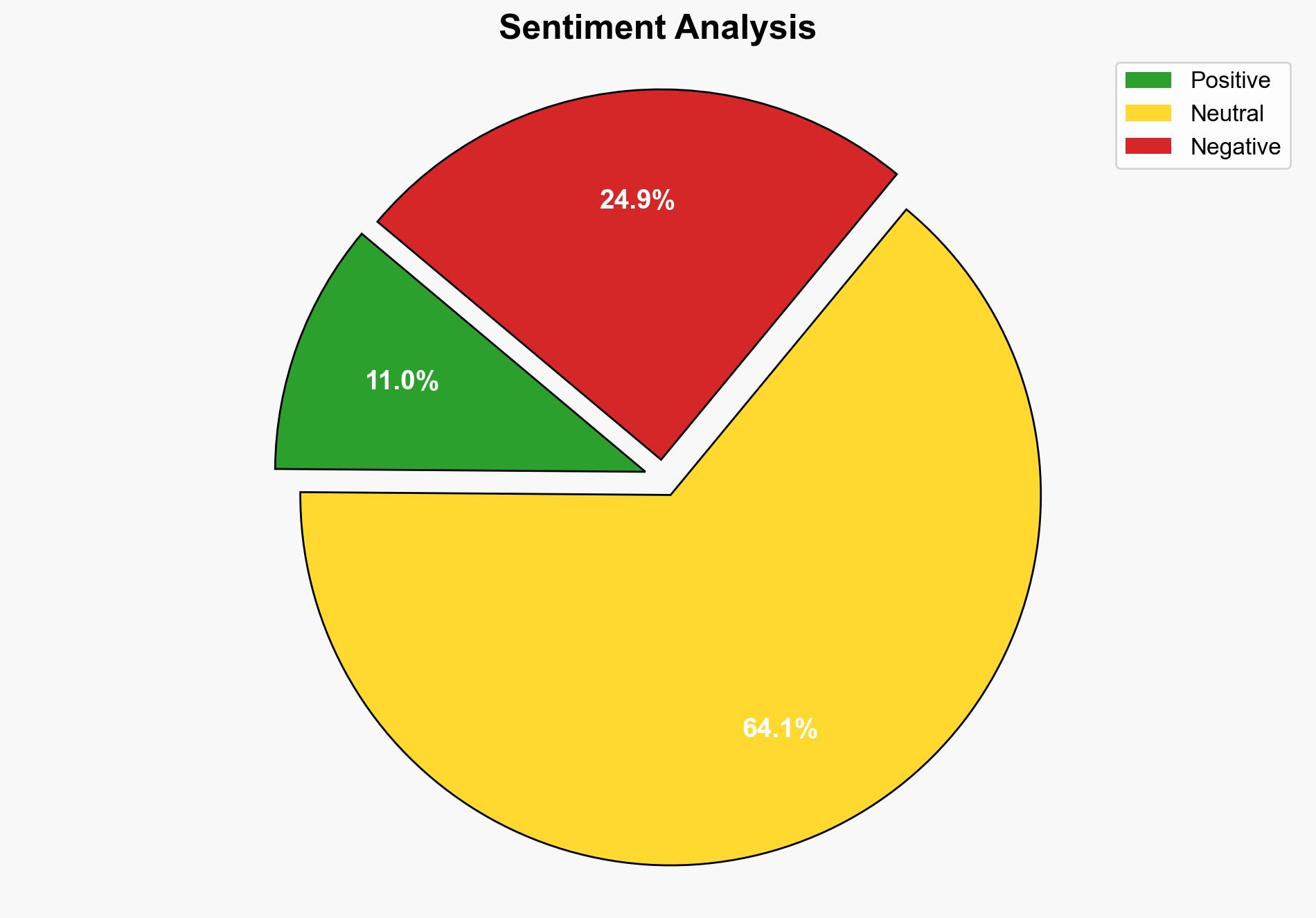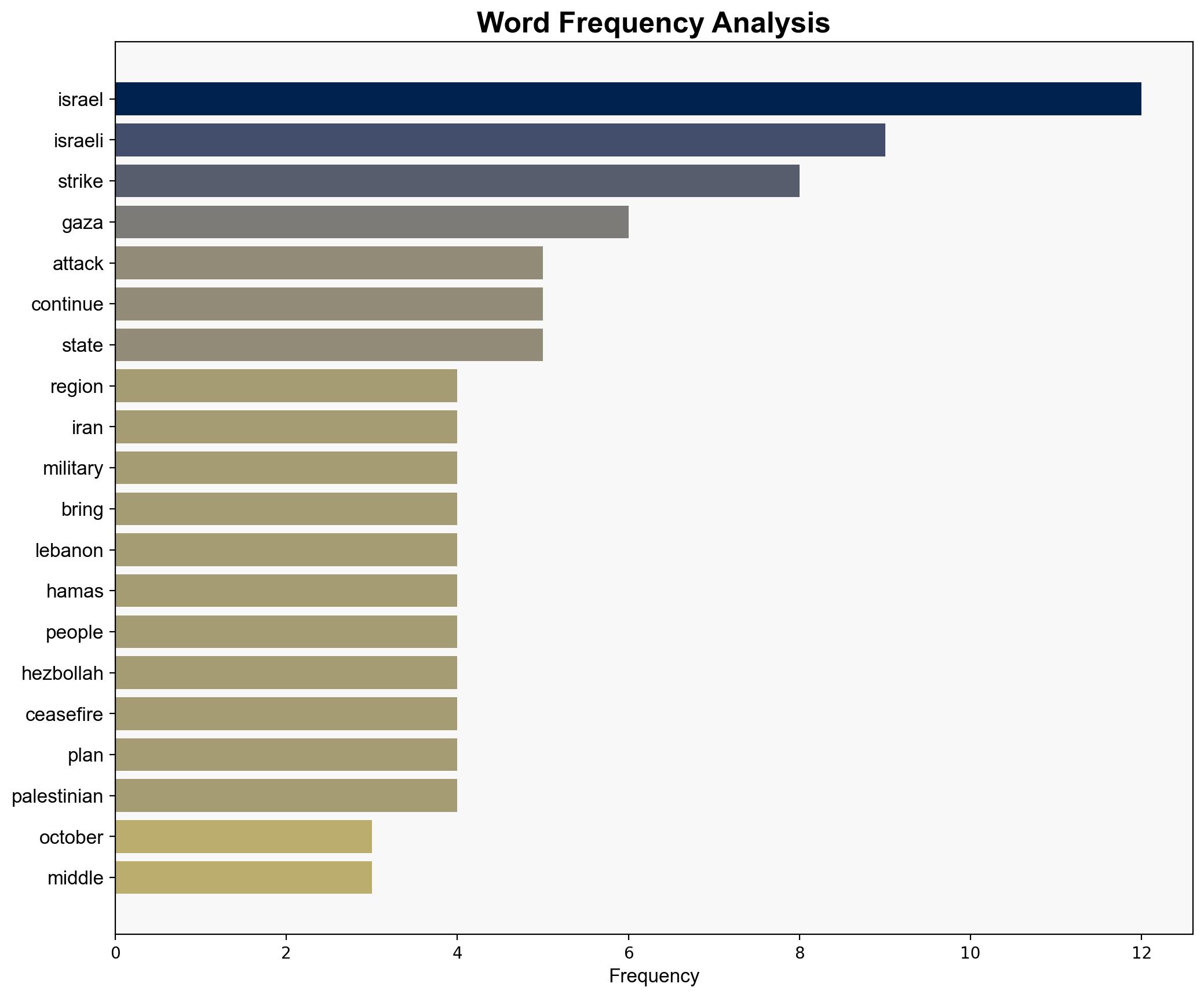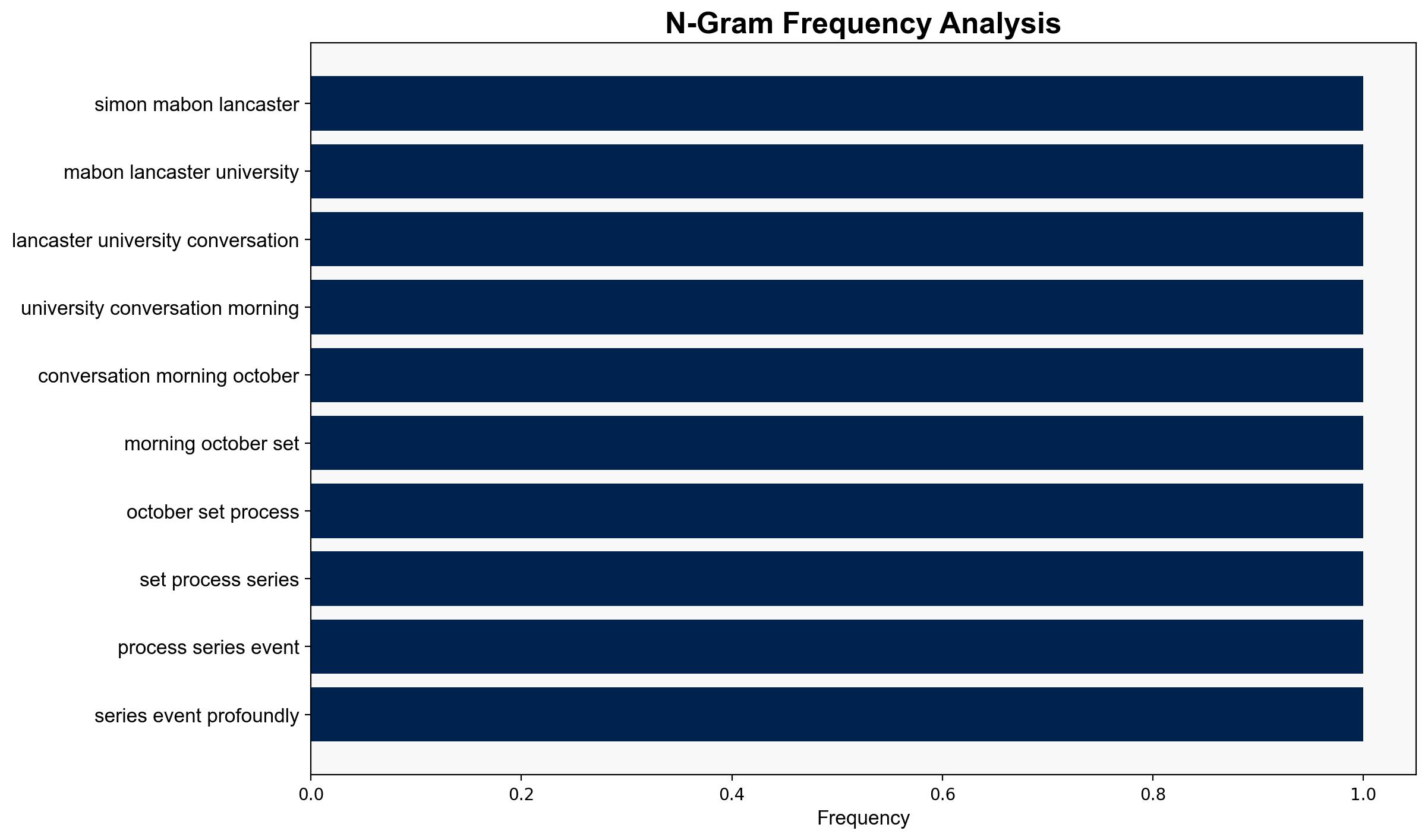The Two Years of Fighting since October 7 have transformed the Middle East – Juancole.com
Published on: 2025-10-07
Intelligence Report: The Two Years of Fighting since October 7 have transformed the Middle East – Juancole.com
1. BLUF (Bottom Line Up Front)
The ongoing conflict in the Middle East, particularly between Israel and its regional adversaries, has significantly altered the geopolitical landscape. The most supported hypothesis suggests that the conflict will continue to escalate, driven by entrenched hostilities and strategic interests, with a moderate confidence level. Recommended action includes diplomatic engagement to de-escalate tensions and prevent further regional destabilization.
2. Competing Hypotheses
Hypothesis 1: The conflict will escalate further, with Israel continuing its aggressive military posture against Iran and its proxies, leading to increased regional instability.
Hypothesis 2: Diplomatic efforts, potentially led by external actors, will succeed in de-escalating tensions, resulting in a temporary ceasefire and a shift towards normalization of relations in the region.
Using the Analysis of Competing Hypotheses (ACH) 2.0, Hypothesis 1 is better supported due to the consistent pattern of military engagements and the lack of substantial diplomatic breakthroughs. The entrenched positions of key actors like Israel and Iran further support this hypothesis.
3. Key Assumptions and Red Flags
– Assumption: Israel perceives Iran as an existential threat, driving its military actions.
– Red Flag: The potential for miscalculation or unintended escalation due to ongoing military operations.
– Blind Spot: The internal political dynamics within Iran and Israel that could influence decision-making.
– Cognitive Bias: Confirmation bias may lead analysts to overemphasize military actions over diplomatic signals.
4. Implications and Strategic Risks
The continued conflict poses significant risks, including:
– Regional destabilization affecting global oil markets.
– Increased refugee flows exacerbating humanitarian crises.
– Potential cyber-attacks as a form of asymmetric warfare.
– Heightened tensions could lead to broader international involvement, complicating resolution efforts.
5. Recommendations and Outlook
- Engage in multilateral diplomatic initiatives to address underlying grievances and promote dialogue.
- Enhance intelligence-sharing mechanisms to prevent miscalculations and unintended escalations.
- Scenario Projections:
- Best Case: Successful diplomatic intervention leads to a sustainable ceasefire and gradual normalization.
- Worst Case: Full-scale regional conflict involving multiple state and non-state actors.
- Most Likely: Continued low-intensity conflict with periodic escalations and temporary ceasefires.
6. Key Individuals and Entities
– Benjamin Netanyahu
– Hassan Nasrallah
– Mohammad bin Salman
– Donald Trump
7. Thematic Tags
national security threats, cybersecurity, counter-terrorism, regional focus





